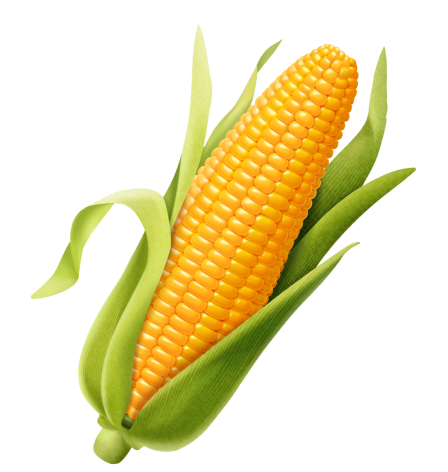Seed Corn
How to Seed Corn for New Harvests
Seeds for corn aren’t necessarily expensive, but buying new ones every year can be annoying. As a result, you may want to get seeds directly from the corn you harvest to ensure that you can minimize the money you spend every year. The following steps should help to make the seed corn harvesting process more comfortable to handle and give you the help that you need to have great corn seeds.
Find the Seeds You Want
The best way to start here is to choose the ears of corn from which you want to save seeds. This process may take a little bit of work and is often a challenge. Typically, you usually want to choose seed from no less than 100 different ears. Taking them from less may result in inbreeding and bad corn. Taking from more than that is time-consuming and annoying for most people.
How do you select the ears that you want? Start by finding the healthiest ears on your farm. You want healthy ears because they produce the best seed corn. Try to avoid taking all of the most robust, though, because you might end up not selling your corn. Focus on stable stalks, minimal diseases, and large cobs that are full and ready to pick. At this point, you can take them from their shoot.
Pro tip: tie a ribbon around stalks as your corn grows to check for potential seed ears. A shoot that looks quite strong is likely to be just as great looking down the road. However, you should also make sure to tie up over 200 to 300 or so. Doing so will help you find replacements as you move through the stalks. In this way, you should have no difficulty finding ears that you want to dry for seeds.
Getting Your Seeds Properly Dried
Once you have selected the cobs from which you want to draw seed corn, you need to let them dry out. The best way to achieve this effect is to leave them on the stalk. After the harvest is over, these plants should remain. Wait for the husk of each to turn brown before you try the dent test. Take the cob into your hand, without removing it, and press down with your thumb. If it doesn’t dent, it is dry enough to pick.
If you find that rain may affect your corn before it dries, though, you need to pull them out and hang them in a dry place. A barn or garage works here. This step is also smart because it pulls your stalks away from potential threats, like crows. Leave your stems here until they have reached the proper drying level. At this point, you are ready to start removing the seed to use for later.
Note: not all corn dries at the same rate. For example, sweet corn must be seeded before it fully dries. If you don’t, the seeds may end up damaged. Instead, wait until the right after the milk stage of the cob. This occurs when the kernel produces a milky liquid when pressed. If your sweet corn no longer produces this milk, you can remove the stalks and hang them to dry out thoroughly.
Removing the Seeds from the Cob
After you feel like your seed corn has dried out enough, you can start removing the kernels. This step is often the most fun because you get to work with your cobs in a hands-on way. However, this process may also be somewhat boring or tedious for some people. The joy you get out of it depends on how much you like handling corn. If you love doing work with your hands, you may enjoy this part.
Start by pulling any leaves off the corn – if any exist – and taking them right off of the stalk. This step helps to make it easier to seed your corn correctly. Now, place your thumb against the kernels and push down slowly. As you push, the kernels should start to fall out of the cob. Place a large tray underneath where you work to catch any stray grains and aim the rest into another dish nearby you.
Pro tip: during this step, you may find that the dry kernels produce a bit of silk that can be annoying when inhaled. Avoid this problem by seeding outdoors or placing fans near you if you are indoors. Point the fans outward to direct the debris away from you. And don’t forget to label the container in which you place your seeds. This step is particularly essential if you have many corn types to seed.
Putting the Seeds Away for the Year
Collect all of your seed corn and store it in large plastic bins with an air-tight top. Place a small container of desiccant inside to absorb water and avoid damage. Once you have sealed up your corn, you can store it in a dry and warm place. Try to keep the humidity level low to avoid any seed growth. Also, put the seeds in a dark place to keep them from getting any sun and growing.
The temperature should be maintained at around room temperature or 65 degrees Fahrenheit. Any cooler and the seeds might not be as potent for the next year. However, they don’t experience any severe damage until around 42 degrees Fahrenheit. If you use a small heater, you should be able to store your seeds through the winter without experiencing any critical or problematic issues.
Note: the seeds you collect may or may not be enough for your harvest next year. That all depends on the size of your field and other factors. For example, many seeds may be unsuitable after storage. Though this problem doesn’t happen that often, they may end up going bad even if you properly prepare them. Therefore, you should be prepared to purchase some corn seeds to be safe.
Do You Need Help?
If you want the best seed corn, please contact us at Online Seed Sales right away. Our professionals have years of experience working with high-quality seeds. We can get you the corn that you need to create a vast field of high-quality products. Beyond that, we can also help you learn how to maintain any seeds you may want to dry as a way of helping you get ahead.


